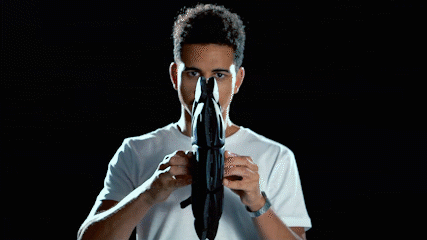First aid training courses are looking at the future of helmets today and these look great. Book in to one of our first aid training courses at Parklands Hotel to have a great day and learn some excellent skills so that you can look after a friend in need. We have many courses running throughout winter and that is the best time to sit inside and learn so you are ready to help during summer.
AN INNOVATIVE foldable helmet design could solve the most annoying thing about cycling, but they don’t exactly come cheap.
A CYCLING helmet that offers a revolutionary folding design, allowing it to be easily placed away in your bag after riding has announced one of the world’s most famous athletes as an investor.
World number one tennis player Andy Murray is a financial backer of the so-called “world’s first folding helmet” produced by UK-based company Morpher.
The company’s “folding helmet technology” provides a compact protective headwear solution for cyclists that doesn’t compromise structural integrity or safety.
The design which has been patented in several countries has received widespread praise and was named one of Time magazine’s top 25 inventions of the year in 2016.
This week the Morpher revealed the tennis superstar was among 400 people who helped it raise nearly $1.2 million (£700,000) on crowd-funding platform Seedrs, dedicated to funding start-ups.
“Morpher is a product that the modern cyclist should own — one that has been dutifully perfected by an award-winning inventor,” the tennis champion, who received a knighthood in December, said in a press release put out by the company.

Morpher’s foldable helmet tech doesn’t come cheap.Source:Facebook
“Cycle rental schemes are proving to be hugely popular. But very few of us non-bike owners are wearing helmets,” the company’s website says. “According to research, the main reason is that they are simply too cumbersome to carry around all day, especially if you may only be taking a ten minute bike ride.”
A rival company called FEND has since come to market with a differently designed foldable cycling helmet, funded via Kickstarter.
Living in Sydney, I routinely use my bike to get around town. But I almost always leave my helmet clipped onto the bike when I lock it up in a public place (leaving it vulnerable to theft) simply because I can’t be bothered to carry it around.
These kind of innovative helmets could be the solution.
Morpher offers free express delivery of its helmets worldwide — but given the high price tag of the helmet, it’s no wonder why they’re offering free shipping.
If you want to pick yourself up a Morpher folding helmet it will cost you about $200 ($US149.00).
Or, to put it in perspective, just under two thirds of what you’d be fined for not wearing a helmet while riding your pushbike in NSW.















